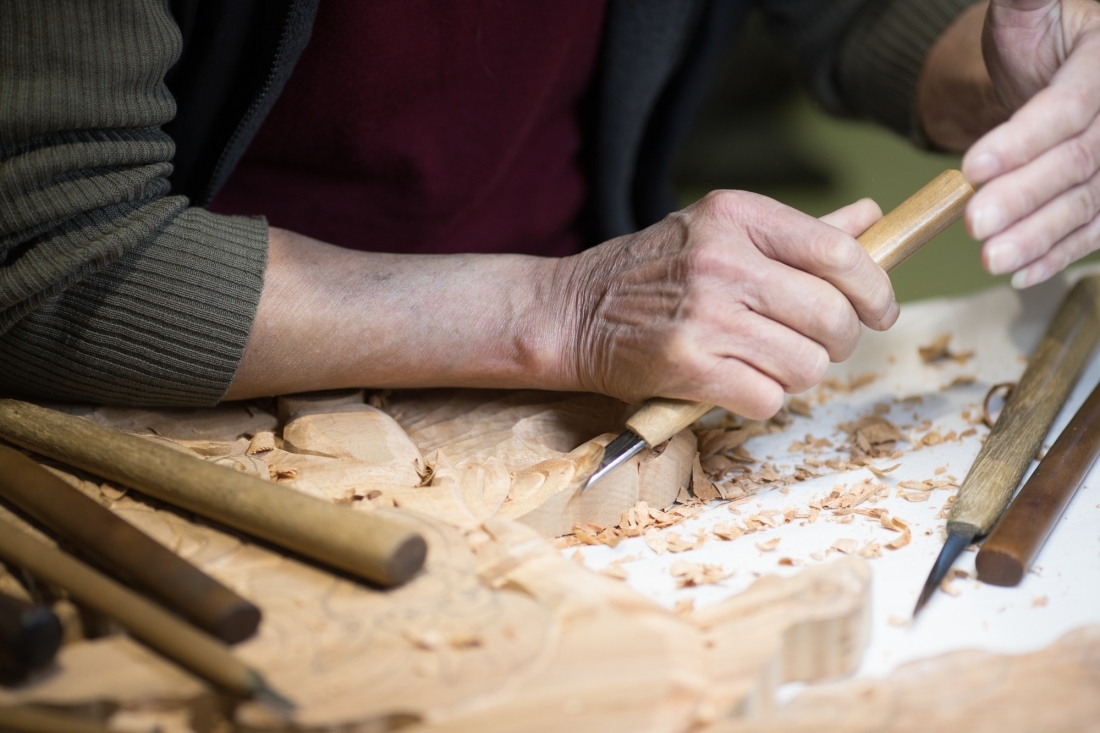TECH & CULTURE
Traditional Japanese woodworking technique “Kumiki”
July 28, 2023
Kumiki is a Japanese carpentry technique which means “to join wood together”. In this joinery technique, wood pieces are interlocked together without the use of nails or fasteners to form sturdy three-dimensional objects. Its application ranges from architecture to furniture to toys and homeware. There are more than 200 types of kumiki techniques, including tsugite, in which wood pieces are connected vertically, and shiguchi, which connects wood pieces at a right angle or diagonally.

A toy called chiegi or chie-no-ita used in mid-Edo period is believed to have been the origin of kumiki. It is also said to have been inspired by the architecture of ancient Japanese shrines and temples, which were characterised by a wooden structure that did not use any adhesives or nails.
The kumiki technique is characteristic of the Odawara area in central Japan and was developed around 1887 (Meiji 20) by Tsunetaro Yamanaka, an Odawara resident who had mastered the art of joinery at the time.
Kumiki, with its geometric and intricate features, has been used in Japanese architecture to provide strong structural and aesthetic accents able to support large structures. This can help isolate vibration while maintaining the structural integrity of houses in earthquake-prone Japan. Other reasons why Japanese use kumiki is that timber can be lengthened with joints, rotten wood can be replaced, and buildings can be dismantled and rebuilt or relocated.
The kumiki technique is characteristic of the Odawara area in central Japan and was developed around 1887 (Meiji 20) by Tsunetaro Yamanaka, an Odawara resident who had mastered the art of joinery at the time.
Kumiki, with its geometric and intricate features, has been used in Japanese architecture to provide strong structural and aesthetic accents able to support large structures. This can help isolate vibration while maintaining the structural integrity of houses in earthquake-prone Japan. Other reasons why Japanese use kumiki is that timber can be lengthened with joints, rotten wood can be replaced, and buildings can be dismantled and rebuilt or relocated.

In contemporary Japan, renowned Japanese architect Kengo Kuma has explored this technique visible in his architectural works, homeware and accessories. Some examples include the Sunny Hills cake shop located in the fashionable district of Aoyama in Tokyo, the Yasuhara Wooden Bridge Museum in Kochi prefecture, the GC Prostho Museum Research Center in Aichi prefecture, his geometric kumiki shelves and 3D-printed sunglasses.
In 2020, UNESCO designated traditional Japanese architectural craftsmanship used in kumiki as an Intangible Cultural Heritage.
In 2020, UNESCO designated traditional Japanese architectural craftsmanship used in kumiki as an Intangible Cultural Heritage.
